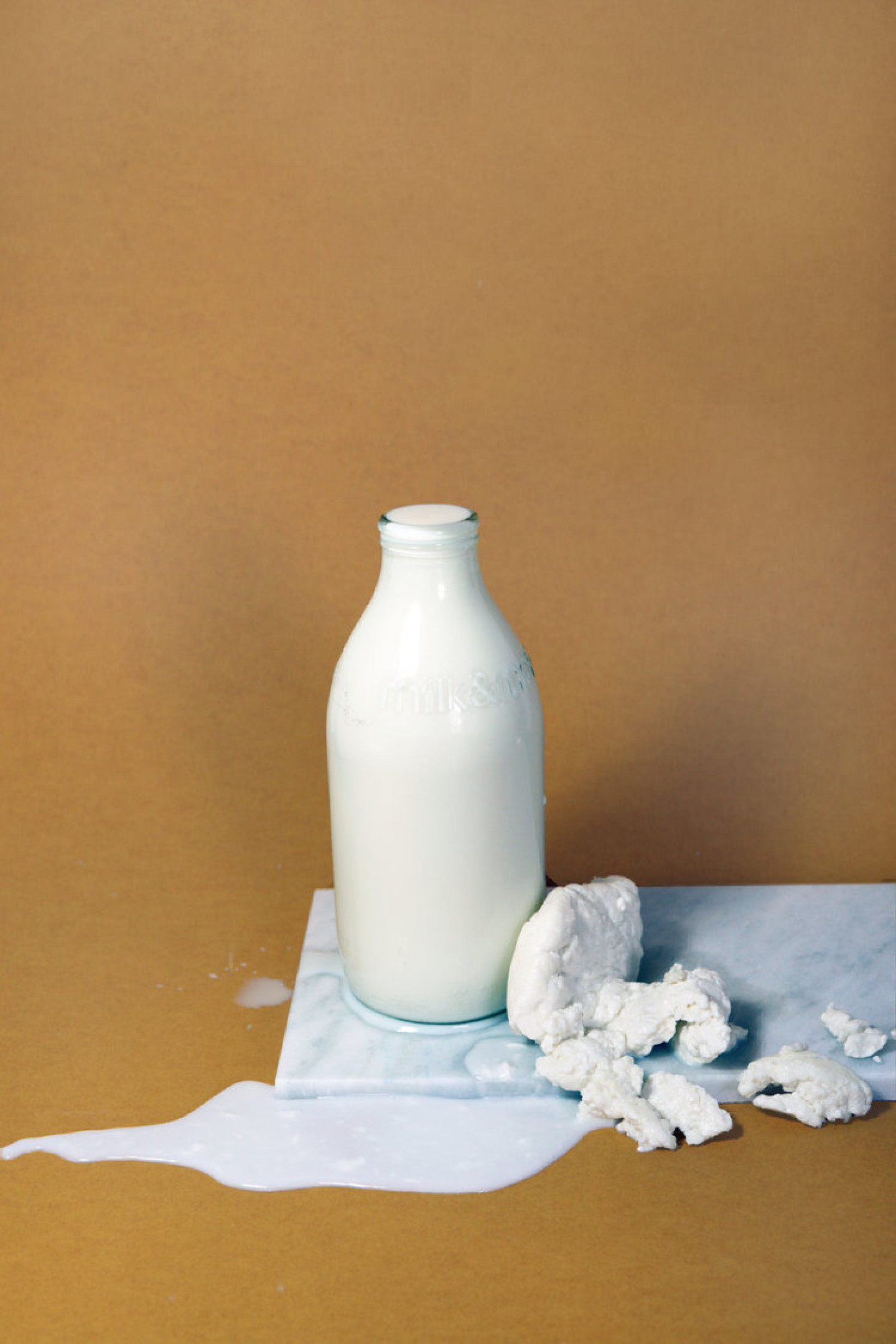Three designers crafting sustainable material from cow's milk.
Due to the detrimental and polluting effects of PVC-based plastic, the design industry is seeing an ongoing shift in the perception of materials and how waste materials can be utilized to replace plastic-based objects.
Although these materials vary in durability and what they can be used to construct, recent innovations are often biodegradable which is an obvious benefit when compared to the permeability of petroleum-based plastics.
Many designers are utilizing waste products from the food industry, transforming waste matter into useable products to replace the polluting plastic-based ones.
One such material is cow’s milk: a natural substance made up of approximately 200 minerals and proteins.
Designers have found a way of utilizing the proteins found in waste milk, transforming it into a resilient material for product construction.
The use of milk in product design is not a new concept, and in the 20th century, the earliest plastics were known as Casein plastic — a flexible material similar in consistency to the today’s PVC-based plastics.
Although the material’s production ceased after this period, today a few designers are similarly taking waste milk and using it to create material alternatives to plastics and clay.
Royal College of Art graduate, Tessa Silva’s ‘Protein project’ investigates using waste milk to produce interior design objects.
Silva uses milk from an organic dairy farm in Sussex, which on average, throws 3,000 litres of skimmed milk away each week.
Silva makes the material by heating the milk until it curdles into a liquid whey.
After this, the curdles are dried out by an industrial dehydrator and mixed with a natural plasticiser which turns it into pellets.
Not only can the material be used for compression moulding, but it can also be sculpted by hand, and possesses textual qualities similar to natural binding materials used for modelling, such as clay.
Hannover-based designer Anke Domaske has created ‘Qmilk’ where she transforms waste milk into an eco-friendly fibre. The thin material is antibacterial, flame resistant and temperature regulating, and can be fashioned into thread, felt, textile and paper.
Also derived from milk protein, Lactips produce water-soluble thermoplastic pellets.
The pellets are fashioned into a thin film-like material which can be used as a packaging for food-based products. The bioplastic is fully biodegradable and takes 18 days to decompose at home when placed in plant compost. The material is also water-soluble and can be dissolved in boiling water.
[img]
[img]
[img]



